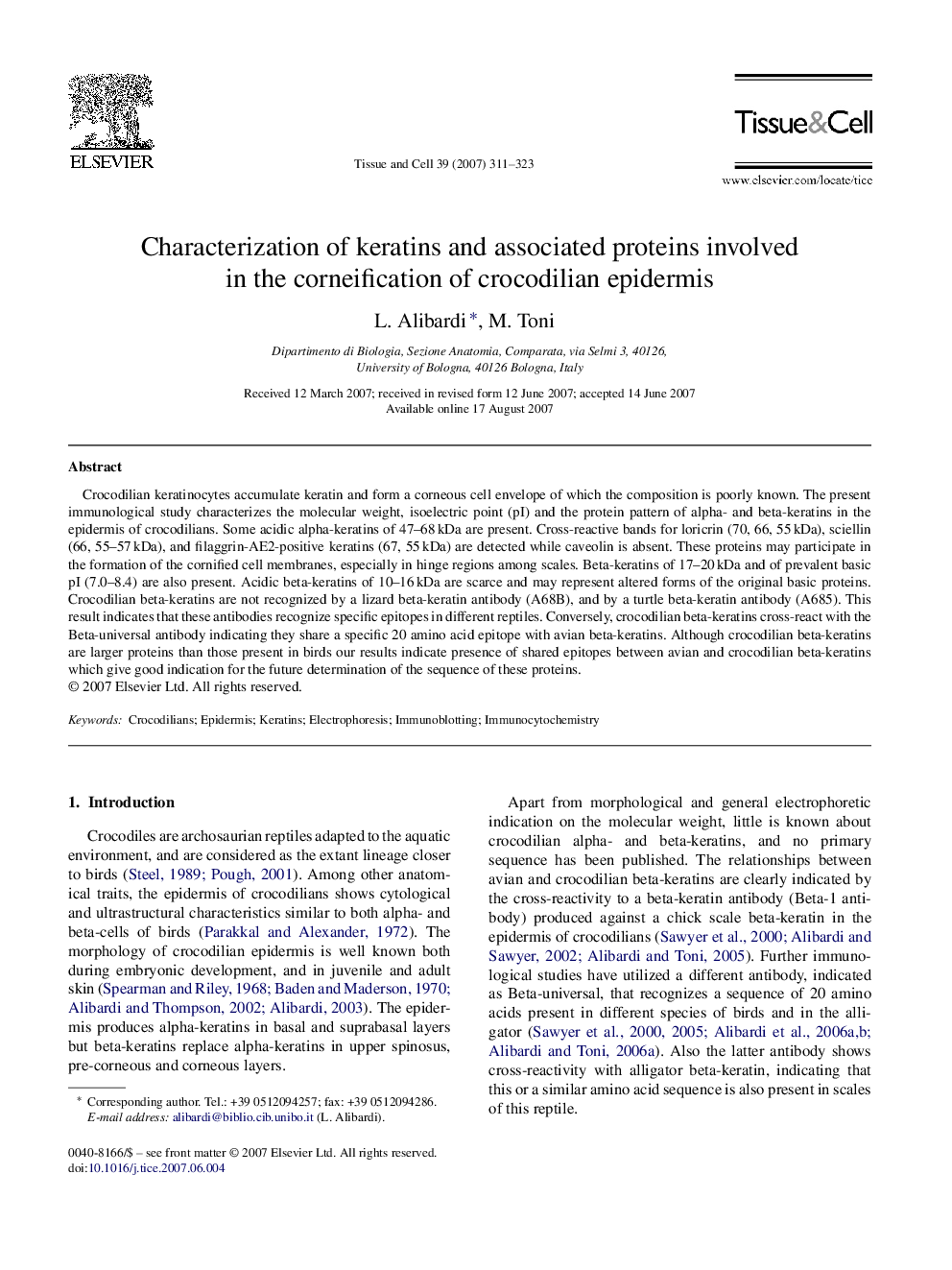| Article ID | Journal | Published Year | Pages | File Type |
|---|---|---|---|---|
| 2204174 | Tissue and Cell | 2007 | 13 Pages |
Crocodilian keratinocytes accumulate keratin and form a corneous cell envelope of which the composition is poorly known. The present immunological study characterizes the molecular weight, isoelectric point (pI) and the protein pattern of alpha- and beta-keratins in the epidermis of crocodilians. Some acidic alpha-keratins of 47–68 kDa are present. Cross-reactive bands for loricrin (70, 66, 55 kDa), sciellin (66, 55–57 kDa), and filaggrin-AE2-positive keratins (67, 55 kDa) are detected while caveolin is absent. These proteins may participate in the formation of the cornified cell membranes, especially in hinge regions among scales. Beta-keratins of 17–20 kDa and of prevalent basic pI (7.0–8.4) are also present. Acidic beta-keratins of 10–16 kDa are scarce and may represent altered forms of the original basic proteins. Crocodilian beta-keratins are not recognized by a lizard beta-keratin antibody (A68B), and by a turtle beta-keratin antibody (A685). This result indicates that these antibodies recognize specific epitopes in different reptiles. Conversely, crocodilian beta-keratins cross-react with the Beta-universal antibody indicating they share a specific 20 amino acid epitope with avian beta-keratins. Although crocodilian beta-keratins are larger proteins than those present in birds our results indicate presence of shared epitopes between avian and crocodilian beta-keratins which give good indication for the future determination of the sequence of these proteins.
